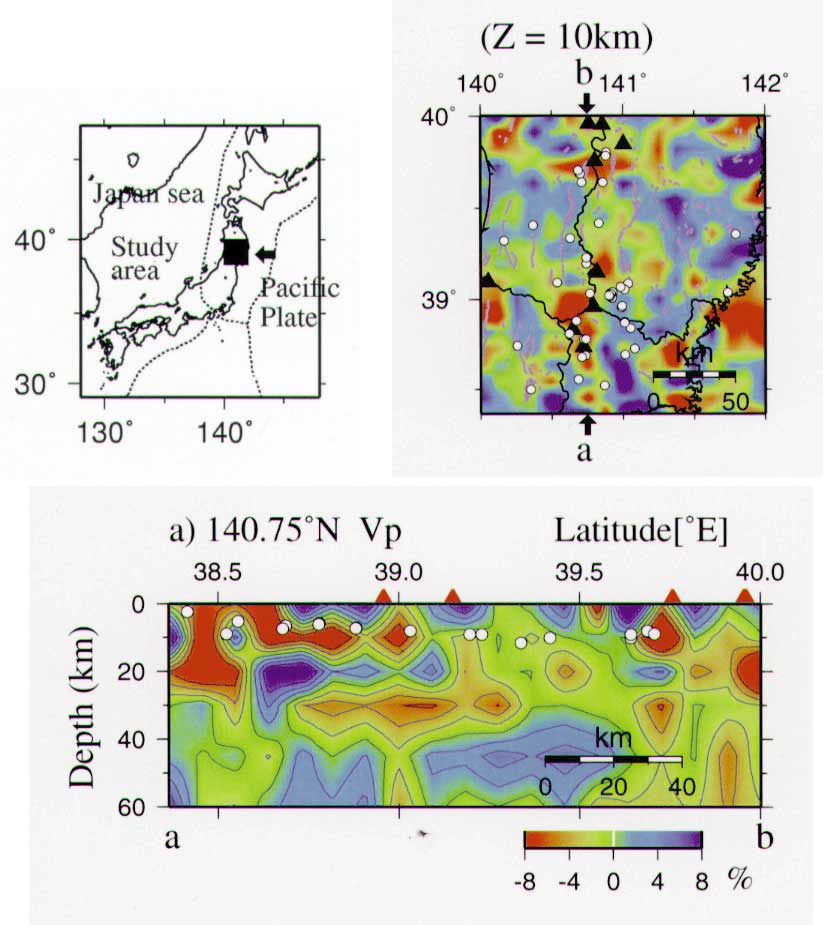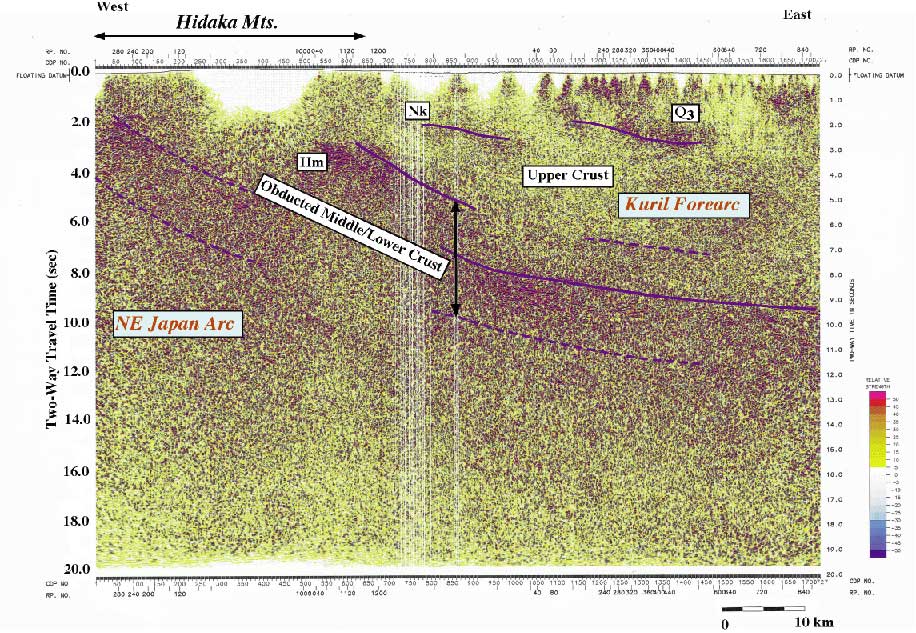
Fig.1. Result from tomopgaphic imaging in Northern Honshu. (a) Surveyed
area. (b)
Horizontal section at a depth of
10km. (c) Vertical section along a-b in (b).

Fig.2. Crustal section (migrated) in Hidaka collision zone.
Research on the crustal structure using an explosion seismic technique
in Japan was started in 1950
as an important cooperative research in geoscience. The cooperative
research of many universities
and institutes was arranged by ERI. Results of investigations conducted
in many regions of the
Japanese Islands have been referred as basic geophysical information
by scientists in various fields of
geosciences.
Since 1993, ERI has been also conducted intensive seismic observations
under nationwide
cooperation with other universities and institutions to investigate
physical mechanism of earthquake
occurrence. In 1993, we installed a dense seismic array in the Nikko
area; in 1995, the Hyogo-ken
Nanbu earthquake region was surveyed; and, in 1996, we surveyed the
Japan Alps region. Through
these studies, we have revealed important structural features involving
mid-crustal reflectors probably
related by fluid or magma within the crust.
Based on the projects mentioned above, we started a new project of
"Deformation processes of
island arc crust" in 1997 to elucidate the crustal inhomogeneities
from multidisciplinary experiments
and observations, and investigate the mechanisms for crustal activities
in relation to the
inhomogeneous structures. In 1997-1998, an extensive seismic expedition
was undertaken in Northern
Honshu Arc. From seismic refraction/reflection surveys, a detailed
crustal section of this arc was
presented (See Recent Research Highlights ). In the microearthquake
observation, we used a
sophisticated telemety system using satellite communication, The data
for 2-year observation revealed
a precise microearthquake distribution and 3D images of crustal inhomogeneity.
Fig. 1 shows the result
from the tomography study. In this figure, we see a trend of low velocity
material along the backbone
range (the Quaternary volcanoes). The eastern part of the surveyed
area is characterized by a high
velocity body, which is consistent with the result from the seismic
refraction study.
In 1999-2000, an extensive seismic expedition was undertaken in Hidaka
region, Hokkaido, where the
Kuril Forearc is colliding against the Northern Honshu Arc. A 227-km
long seismic
refraction/wide-angle reflection survey revealed a eastward dipping
plane within the Kuril Forarc and
the velocity inversion occurring west of the Hidaka Mts. A seismic
reflection survey clearly imaged
eastward dipping planes within the Kuril Forearc, which strongly suggests
the westward obduction of
the Kuril Forearc.

Fig.1. Result from tomopgaphic imaging in Northern Honshu. (a) Surveyed
area. (b)
Horizontal section at a depth of
10km. (c) Vertical section along a-b in (b).

Fig.2. Crustal section (migrated) in Hidaka collision zone.